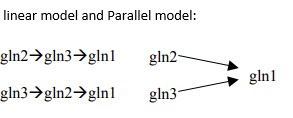#Question id: 11533
#SCPH06 I Botany
IAA biosynthesis is associated with__
#Question id: 11534
#I Life Science/ Life Sciences Group – I-V
Which of the following is the precursor of auxin?
#Question id: 11534
#SCPH06 I Botany
Which of the following is the precursor of auxin?
#Question id: 11535
#I Life Science/ Life Sciences Group – I-V
During IPA pathway in the biosynthesis of auxin using following enzymes except_____
#Question id: 11535
#SCPH06 I Botany
During IPA pathway in the biosynthesis of auxin using following enzymes except_____
#Question id: 11536
#I Life Science/ Life Sciences Group – I-V
IAA has been found to be conjugated to both high- and
low-molecular-weight compounds such as,
a) Low-molecular-weight conjugated auxins include esters of
IAA with glucose or myo-inositol and amide conjugates such as IAA-N-aspartate
b) High-molecular-weight IAA conjugates include IAAglucan
and IAA-glycoproteins found in cereal seeds
c) High-molecular-weight conjugated auxins include esters of
IAA with glucose or myo-inositol and amide conjugates such as IAA-N-aspartate
d) Low-molecular-weight IAA conjugates include IAAglucan and
IAA-glycoproteins found in cereal seeds
Which of the following is the correct prediction about low-and high-molecular weight ?




